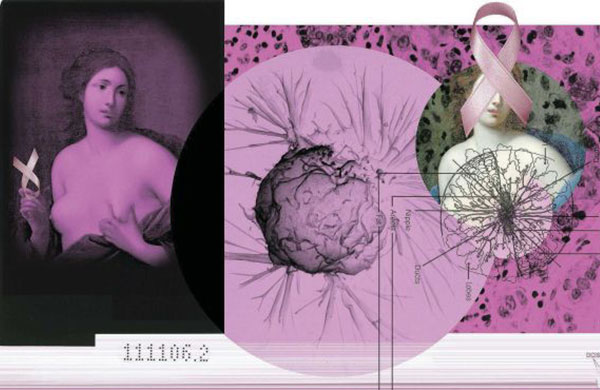 Pancreatic Cancer Research
Pancreatic Cancer Research
New research, by investigators at the Rambam Medical Center in Haifa, Israel, is pointing towards development of new treatment for pancreatic cancer, one of the most deadly and difficult cancers to manage successfully. The American Cancer Society estimates that about 45,220 new cases were diagnosed in the US in 2013 and about 38,460 people died from the disease.
The poor prognosis is often associated with nerve invasion, a form of direct spread of cancer, which occurs in more than 80% of patients. Because the cancer is distributed along nerves it cannot be treated at a specific site and patients receive only palliative care to alleviate painful symptoms.
Ziv Gil, M.D., Ph.D.,the leader of the research team said, “Our long-term goal is to understand the mechanism that triggers progression of pancreatic cancer and to develop the means to inhibit it. It is anticipated that our data will provide meaningful advancement of current knowledge in the field of cancer biology and for the benefit of cancer patients.It is also expected that the results will be equally applicable to other neuroinvasive cancers.”
Alzheimer’s Disease In America
 According to the Alzheimer’s Association’s 2014 Alzheimer’s Disease Facts and Figures Report, a woman’s estimated lifetime risk of developing Alzheimer’s at age 65 is 1 in 6, compared with nearly 1 in 11 for a man.
According to the Alzheimer’s Association’s 2014 Alzheimer’s Disease Facts and Figures Report, a woman’s estimated lifetime risk of developing Alzheimer’s at age 65 is 1 in 6, compared with nearly 1 in 11 for a man.
Angela Geiger, chief strategy officer of the Alzheimer’s Association said, “Well-deserved investments in breast cancer and other leading causes of death such as heart disease and stroke have resulted in substantial decreases in death. Comparable investments are now needed to realize the same success with Alzheimer’s in preventing and treating the disease.”
Adding to women’s Alzheimer’s burden, there are 2.5 times as many women than men providing intensive care, 24 hours a day, for someone living with Alzheimer’s disease. Women are much more likely than men to link isolation with feeling depressed (17% of women vs. 2 % of men).
• 20 % of women vs. 3 % of men went from working full-time to working part-time while acting as a caregiver.
• 18 % of women vs. 11 % of men took a leave of absence.
• 11 % of women vs. 5 % of men gave up work entirely.
• 10 % of women vs. 5 % of men lost job benefits.
There are more than 5 million Americans living with Alzheimer’s disease, including 3.2 million women and 200,000 people under the age of 65 with younger-onset Alzheimer’s disease. This disease has far reaching effects that can plague entire families. There are currently 15.5 million caregivers providing 17.7 billion hours of unpaid care in the US, often at the detriment of their own health.
The total national cost of caring for people with Alzheimer’s and other dementias is projected to reach $214 billion this year, not including unpaid caregiving by family and friends, valued at more than $220 billion.
Alzheimer’s disease is the sixth leading cause of death in the United States, yet it is still widely misunderstood and under-reported. Nearly a quarter (24 %) of both men and women agree with the mistaken belief that Alzheimer’s must run in their family for them to be at risk. This is not the case. Everyone with a brain, both male and female, family history or not, is at risk for Alzheimer’s. Age is the greatest risk factor for Alzheimer’s, and America is aging. As a nation, we must band together to protect our greatest asset, our brains.
The Alzheimer’s Association is launching a national initiative this spring highlighting the power of women in the fight against this disease.
Sephardic Gene Mutations
Researchers have pinpointed two genetic mutations behind a severe developmental disease seen in children of Moroccan Jewish descent.
Scientists at Ben-Gurion University of the Negev, Israel, studied ten patients from four families that have PCCA2 (Progressive Cerebello-Cerebral Atrophy Type 2). Children who have the disease appear normal at birth and develop as expected until about six months. However, by one year, patients develop brain atrophy (a loss of brain cells), mental retardation and epilepsy. At three years old, most patients will be in a near-vegetative state.
The work to find the gene behind the condition was led by Professor Ohad Birk and Miora Feinstein, a doctoral student. They found that the disease is caused by two different mutations in the same gene— VPS53.
The exact reasons why VPS53 mutations cause PCCA2 are unclear. However, the researchers found that the tiny pockets that carry material around cells, called endosomes, do not move around like they should. As a result, waste material, which should be broken down and destroyed, builds up within the cell.
Professor Birk’s group has now discovered more than 20 genetic diseases in people of Sephardic backgrounds. In 2010, they identified mutations in a gene called SESPSECS, which prevent the mineral selenium from being used in the body and cause a very similar disease called PCCA.
“There was an idea that Ashkenazi Jews have more disease than others, but when one begins looking at Sephardic Jewish diseases, they are there. They have just not been sorted out. Because they have not been sorted out, there was no carrier testing, no prevention programs or anything. I have shifted part of my lab into the study of Sephardic Jewish diseases,” said Professor Birk.
PCCA2 is a recessive disease, meaning that both parents must be carriers of a VPS53 mutation. Children have a 25 % risk of inheriting two mutated copies of VPS53, and having the disease. As one in 37 Moroccan Jews carry VPS53 mutations, PCCA2 is now the most common severe genetic disease in this community.
Fifteen percent of Israel’s population (one million people) is of Moroccan ancestry. Nearly 100,000 Moroccan Jews also live in the US, meaning a large number of people are at risk of inheriting the disease.
Carrier testing for SESPSECS mutations was introduced in 2011 for all Jews of Moroccan or Iraqi ancestry. Now researchers have called for routine carrier screening for VSP53 mutations as well. This might even start within the year, and could help reduce the number of people inheriting the disease.
Acetaminophen Is Dangerous
 Many view over-the-counter (OTC) drugs as safe because they don’t require a prescription. Nothing could be further from the truth.
Many view over-the-counter (OTC) drugs as safe because they don’t require a prescription. Nothing could be further from the truth.
OTC drugs are still chemicals that in no way, shape, or form treat the cause of one’s problem, and can lead to complications that can seriously injure and even kill. The pain reliever and fever reducer acetaminophen is one such example.
Most people will take this medication without thinking twice about it, which is probably why acetaminophen overdose is the leading cause for calls to Poison Control Centers across the US every year. It is also responsible for more than 56,000 emergency room visits, 2,600 hospitalizations, and an estimated 458 deaths due to acute liver failure each year.
The US Food and Drug Administration (FDA) finally added warnings about liver damage to the drug’s label in 2009. This action came 32 years after a panel of experts advised the agency it was “obligatory” to do so.
Then, on January 14 this year, the FDA issued a statement urging health professionals to discontinue prescribing and dispensing prescription combination drug products that contain more than 325 milligrams (mg) of acetaminophen, to limit the risk of serious side effects.
Now, a team of researchers are raising questions about the use of acetaminophen during pregnancy, as it may raise the risk of behavior problems in children later on. The study suggests that acetaminophen in pregnancy may influence fetal brain development.
While they say it’s too early to make any definitive recommendations to the public, a “heads-up” warning is certainly warranted. Since the results do suggest that prenatal use may as much as double the risk of behavior disorders in the child, pregnant women should talk with their doctors.”
The study included data from more than 64,000 mothers and children. Taking acetaminophen while pregnant, was found to be linked to a 30% increased risk for ADHD in the child during the first seven years of life and a 37% increased risk of being diagnosed with hyperkinetic disorder (HKD), a severe form of ADHD.
Behavioral effects appeared to be dose dependent. The more frequent the use of acetaminophen during pregnancy, the higher the offspring’s chances of being diagnosed with ADHD-related problems.
Children of women who used the drug for 20 or more weeks during pregnancy had nearly double the risk of getting an HKD diagnosis. They also had a 50% greater chance of being prescribed an ADHD medication.
Behavioral problems such as ADHD have skyrocketed over the past few decades, signaling that something is awry. Our environment is becoming overly toxic, and children are paying the price for our chemical-laden lifestyles. We must pay greater attention to shielding pregnant women from any and all toxic exposures, as there’s no telling which one may be the proverbial straw that broke the camel’s back.
The study also found that acetaminophen might render vaccinations less effective when administered together. Infants who received acetaminophen right after getting a vaccination developing significantly fewer antibodies against the disease they were vaccinated against, The vaccines used in the study were for pneumococcal disease, diphtheria, tetanus, whooping cough, hepatitis B, polio, and rotavirus.



